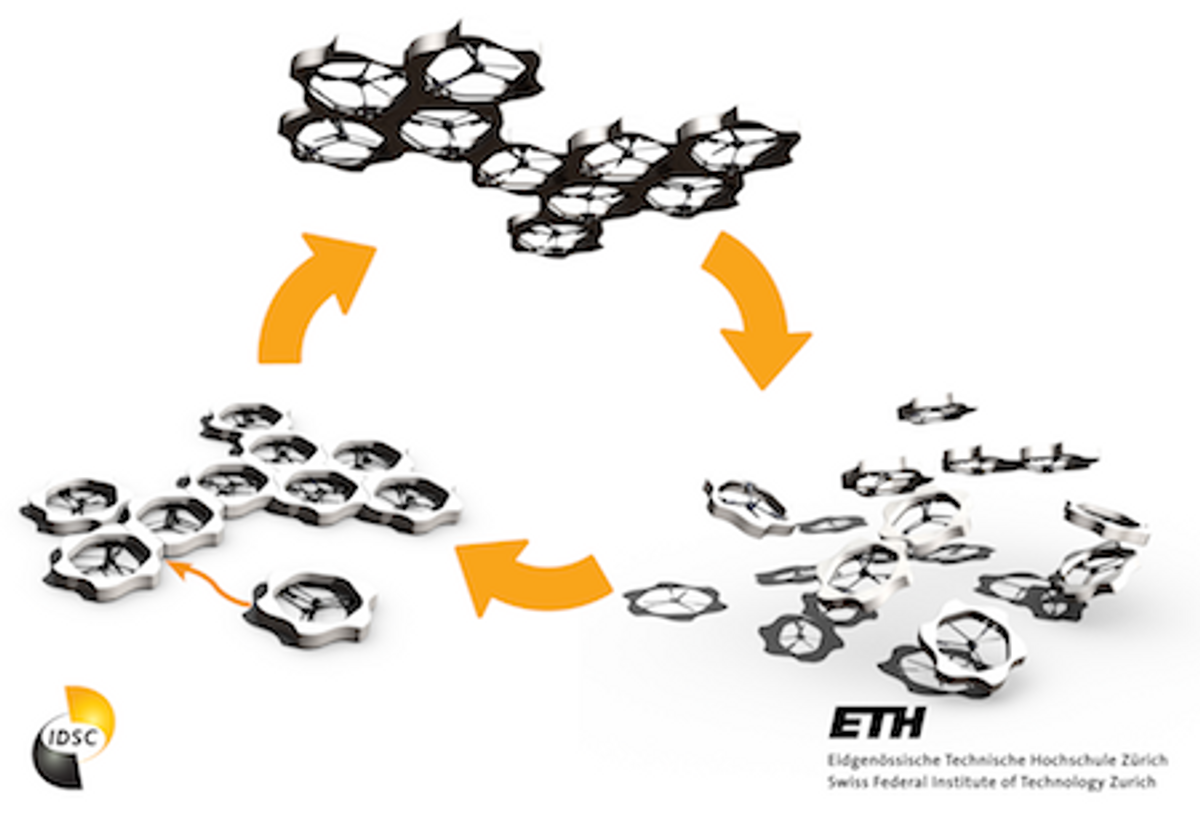The latest episode of the Robots podcast interviews Raymond Oung, a researcher at the Institute of Dynamic Systems and Control (IDSC) at the ETH Zurich, about his amazing Distributed Flight Array (DFA).
Use the player below to listen or download the mp3, and continue reading to learn more.
Oung is one of my colleagues at IDSC, which is headed by Prof. Raffaello D'Andrea and well known for its unconstrained and creative take on autonomous systems and its successful collaborations with innovators in other fields. The Distributed Flight Array developed by Oung is no exception:
You can think of the Distributed Flight Array as a combination between vertical take-off and landing vehicles, and modular reconfigurable robots. It is a flying platform consisting of multiple, autonomous, single-propeller vehicles, and these single propeller vehicles - or modules - are able to generate enough thrust to lift themselves into the air, but are completely unstable in flight, kind of like a helicopter without a tail rotor.
A DFA cycle begins with several modules scattered around the ground. The modules drive around and begin to self assemble, randomly connecting with its peers. Once a sufficient number of modules are assembled, they are able to coordinate and take flight. The DFA will then hover for a pre-determined amount of time before breaking apart and falling back to the ground, only to repeat the cycle in a new configuration.
According to Oung, the DFA is a rich test bed to conduct research on algorithms and architectures in distributed estimation and control (have a look at his publications at CDC2009 and ICRA2010), because it abstracts many of the real-world issues for the next generation of distributed multi-agent systems. Apart from its value for research, Oung also points out the DFA's value as a pedagogical tool and its artistic value:
Robots, as you know, are inherently eye-catching to the public - control theory not so much. Concepts in control theory are usually difficult for the general public to appreciate [...], so projects like the Distributed Flight Array provide the opportunity to illustrate control theory research to the general public in a tangible way.
[...]
One of the motivations behind art is the expression of the imagination. By my definition art is made with the intention of stimulating thought and emotion. I'm not sure if the flight array really stimulates emotion, but it certainly stimulates thought. For what it is, it does communicate ideas to a broad audience, such as expressing the underlying math and control algorithms behind it, so in that sense I do believe it is a piece of art.
For more details including current work, potential applications and future plans for the DFA have a look at the Robots website or tune in to the podcast!
Some videos:
More images:








